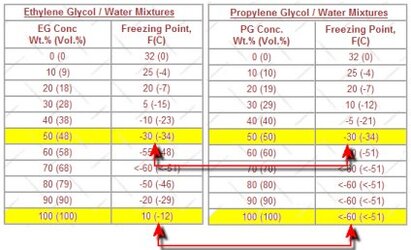Wondered if the following makes sense, it’s something I would really like to try to keep my potential gaming dream machine cool when I crank up the over-clocking.
Could anyone tell me if I'm living in dream land, or would it work!

Just a quick sketch... Basically I would like to do the following:
- Have a cooler box (or heavily insulated enclosure)
- Fill it with oil (or appropriate fluid)
- Using parts ripped off a freezer, drill holes into this and install a cooling system for the oil (or appropriate fluid)
- Have pumps at the other end of the enclosure keeping the oil (or appropriate fluid) flowing across the motherboard
- Install lots of large heatsinks on core components (CPU, GPU)
I would put my components inside the enclosure, seal it up (allowed holes for cables etc...) and then slowly cool the contents to sub-zero temperature (lets say -20C). I'd then keep the cooling system running at all times (to avoid the damage of constant temperature change). The whole system would be completely sealed with no air inside.
Can anyone see any problems here?
Bearing in mind that I accept that the oil or fluid may reduce the lifespan of the electronics (not a concern) and that it would be messy! ) But I would like to try and get my CPU and GPU running at sub-zero.
) But I would like to try and get my CPU and GPU running at sub-zero.
Could anyone tell me if I'm living in dream land, or would it work!

Just a quick sketch... Basically I would like to do the following:
- Have a cooler box (or heavily insulated enclosure)
- Fill it with oil (or appropriate fluid)
- Using parts ripped off a freezer, drill holes into this and install a cooling system for the oil (or appropriate fluid)
- Have pumps at the other end of the enclosure keeping the oil (or appropriate fluid) flowing across the motherboard
- Install lots of large heatsinks on core components (CPU, GPU)
I would put my components inside the enclosure, seal it up (allowed holes for cables etc...) and then slowly cool the contents to sub-zero temperature (lets say -20C). I'd then keep the cooling system running at all times (to avoid the damage of constant temperature change). The whole system would be completely sealed with no air inside.
Can anyone see any problems here?
Bearing in mind that I accept that the oil or fluid may reduce the lifespan of the electronics (not a concern) and that it would be messy!
